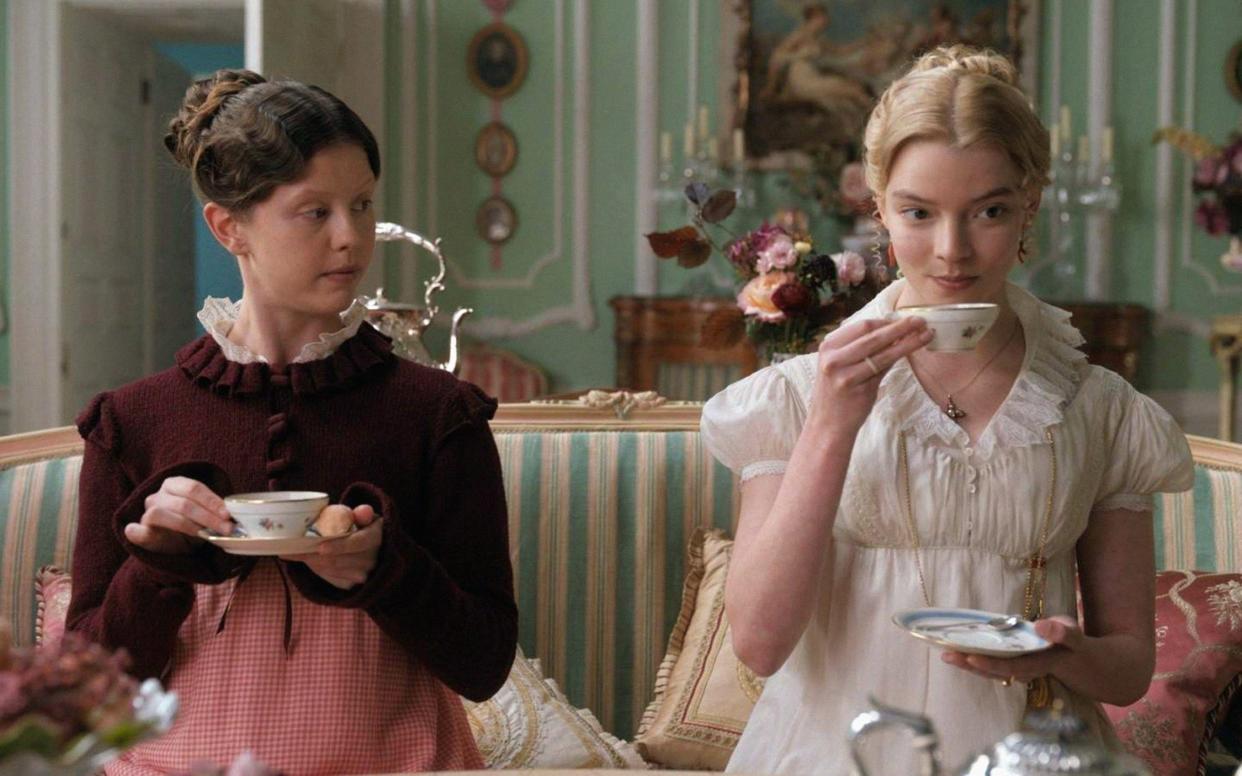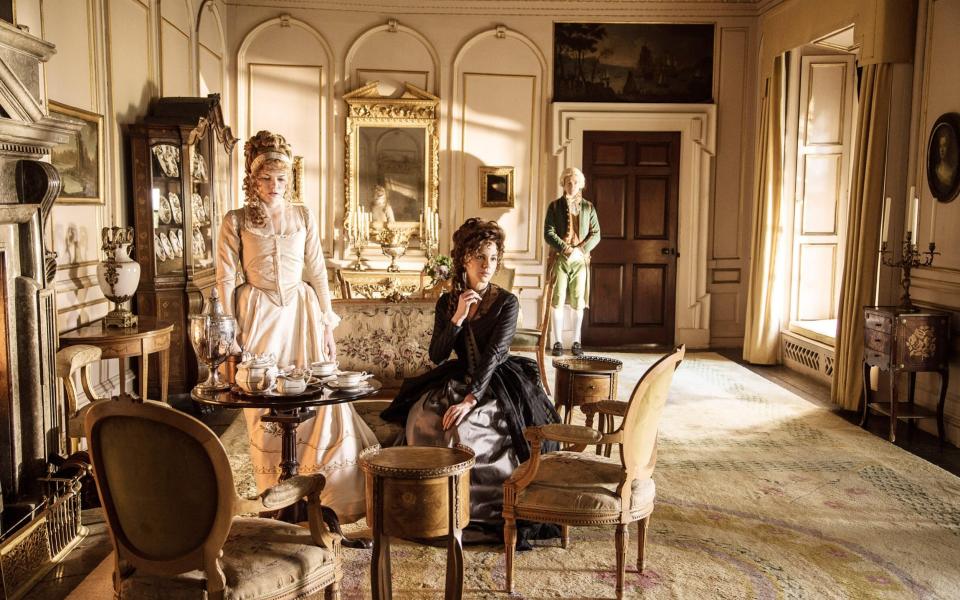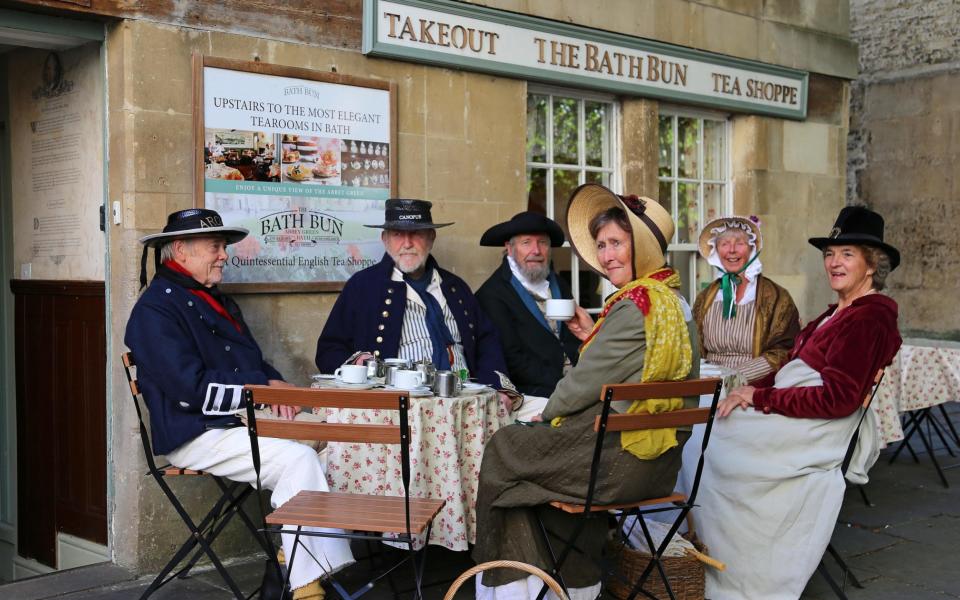Jane Austen's tea drinking will face 'historical interrogation' over slavery links

- Oops!Something went wrong.Please try again later.
Jane Austen's tea drinking will be subjected to "historical interrogation" over its slavery links, the director of a museum dedicated to the author has said.
The writer’s cottage in the Hampshire village of Chawton, where she wrote Emma and Mansfield Park before her death in 1817, is now a museum and place of “Janeite” pilgrimage dedicated to her life and work.
Staff at the museum are now re-evaluating Jane Austen’s place in “Regency-era colonialism” in the wake of Black Lives Matter protests.
The Pride and Prejudice author’s links to slavery through her father Rev George Austen, at one time the trustee of an Antigua sugar plantation, will be highlighted with future displays at the property.
Watch: Sir Hans Sloane bust re-displayed to explain slavery links
The museum's director has stated that Austen’s tea drinking, a key social ceremony in her era and her novels, also links the writer to the exploitation of the British Empire.
Taking sugar in her tea and wearing cotton also connect the author to the products of empire and the slave trade, experts have said, and this broader context will be reexamined at the museum.
One proposed display panel on her abolitionist views states that “Black Lives Matter to Jane Austen”.
Lizzie Dunford, director of Jane Austen's House Museum, told The Telegraph: “This is just the start of a steady and considered process of historical interrogation.
“The slave trade and the consequences of Regency-era Colonialism touched every family of means during the period. Jane Austen’s family were no exception.
“As purchasers of tea, sugar and cotton they were consumers of the products of the trade, and did also have closer links via family and friends.
“At Jane Austen’s House we are in the process of reviewing and updating all of our interpretation, including plans to explore the Empire and Regency Colonial context of both Austen’s family and her work.”
Austen was of the opinion that "tea was seen as a comforting, refreshing, recuperative beverage" and she wrote many scenes around tea at a time when the beverage was becoming "a reason to see neighbours", according to Jane Pettigrew and Bruce Richardson in their book A Social History of Tea.

Biographers have also claimed that Austen was the family’s tea buyer and would often buy tea from Twinings.
She and her sisters were patrons of Josiah Wedgwood, who made fine china they used for tea.
In a letter to sister Cassandra, she wrote of "the pleasure of receiving, unpacking and approving our Wedgwood ware".
Kim Wilson, in her 2011 book Tea with Jane Austen, says: "Jane was an avid tea lover, ready to pounce on a really good cup of tea."

Austen moved to Chawton from Southampton with her mother and sister in 1809, three years after the death of her father, and it was here she revised or wrote her most famous novels.
New work at the site will reflect the fact that in 1760, 15 years before Jane was born, Rev Austen became the trustee of the Antigua sugar plantation of his Oxford University friend James Nibbs. If Nibbs had died early, Rev Austen would have been responsible for the plantation and its slaves.
While his daughter did not profit from the slave trade, new displays at her cottage will inform visitors about the context of Regency society the Austen family moved in, at a time when the wealth and everyday consumption of many families was connected to imperial activities.
Thinking about empire and the slave trade will be embedded “in the planning of all our future interpretation and storytelling”, Ms Dunford said, and interest groups and experts will be consulted on the new approach at Chawton.
“We believe that this is hugely important work and are looking forward to sharing this over the next few years,” Ms Dunford added.

Displays are still being developed, but one panel titled Black Lives Matter to Austen will examine how the writer held abolitionist views, and how these sympathies and her father’s Antigua links fed into her 1814 novel Mansfield Park.
The information states: “Jane Austen belonged to that progressive group in society from which came the anti-slavery campaigners William Wilberforce and Thomas Clarkson. She reveals her social conscience in her reading and her writing.”
According to her brother Henry, Jane Austen’s favourite poet was the abolitionist William Cowper, whose works were read by Martin Luther King.
Chawton, billed as the “most treasured Austen site”, attracts dedicated fans known as Janeites from all over the world.
Watch: Historic England lists villages that have ties to the slave trade

